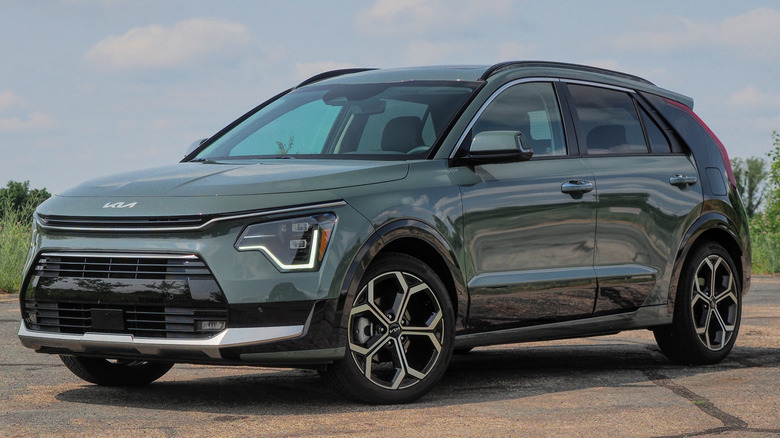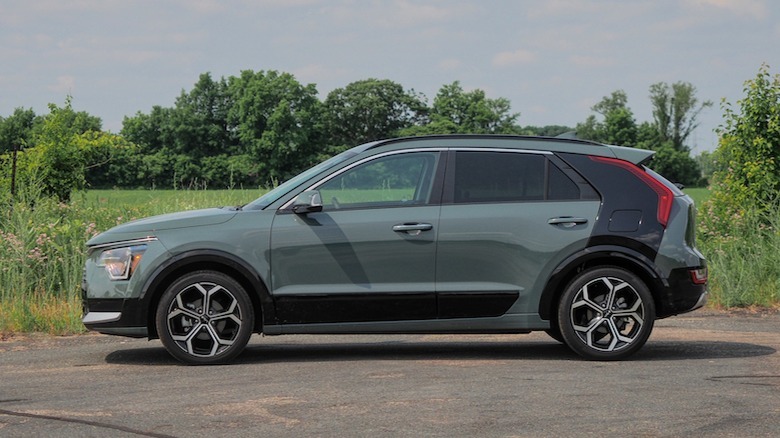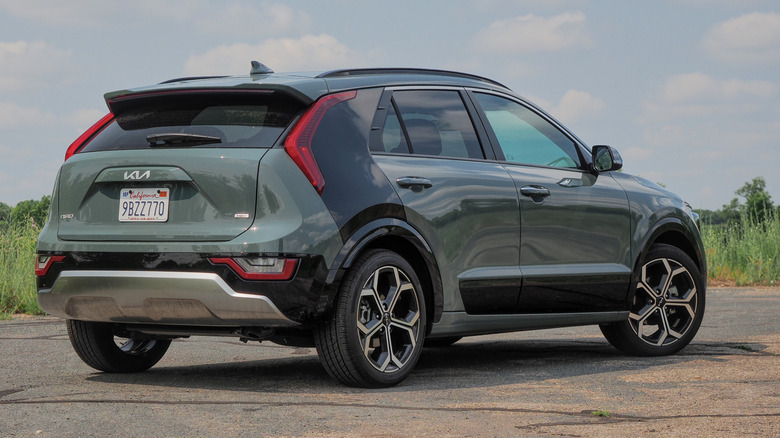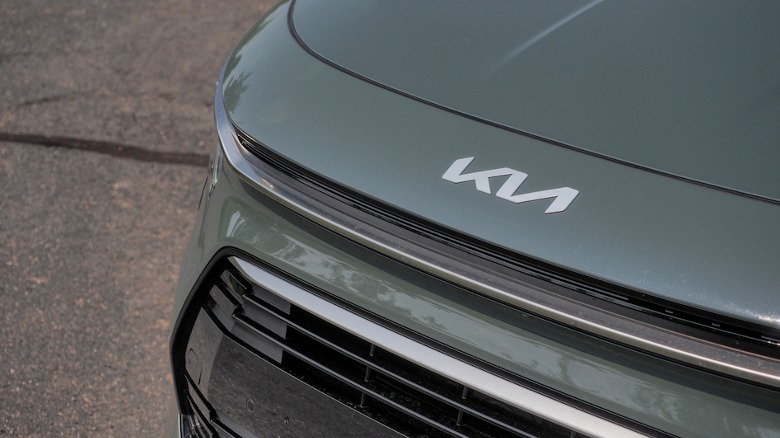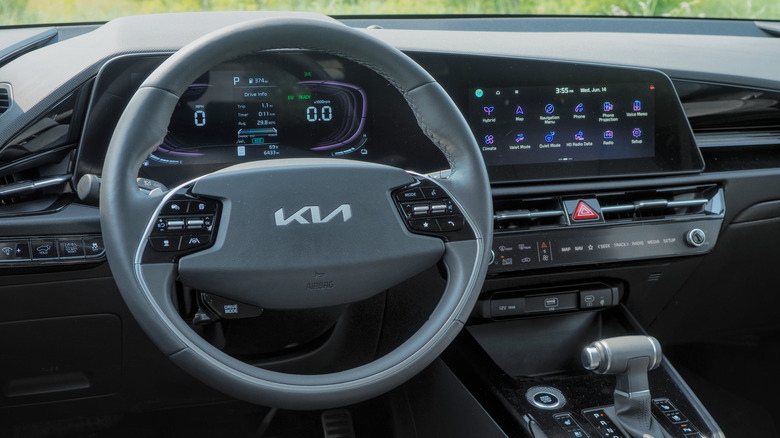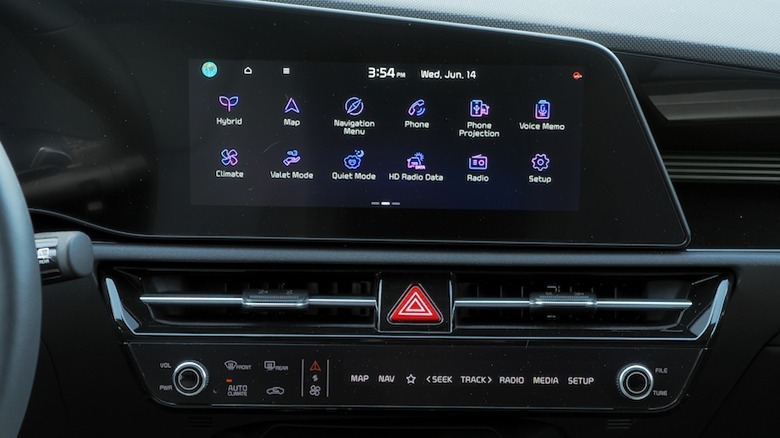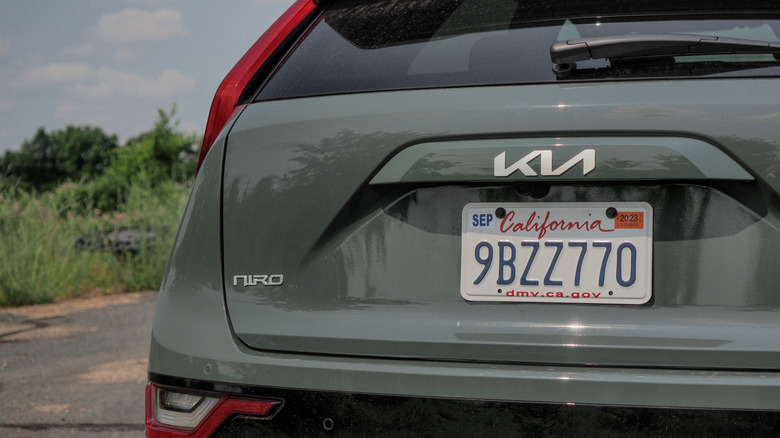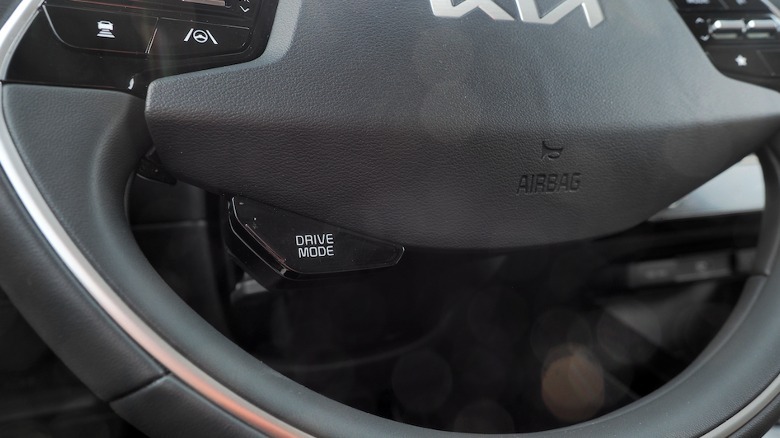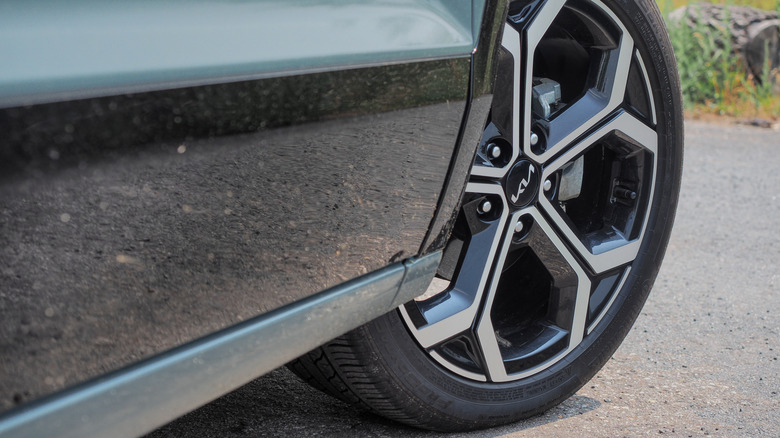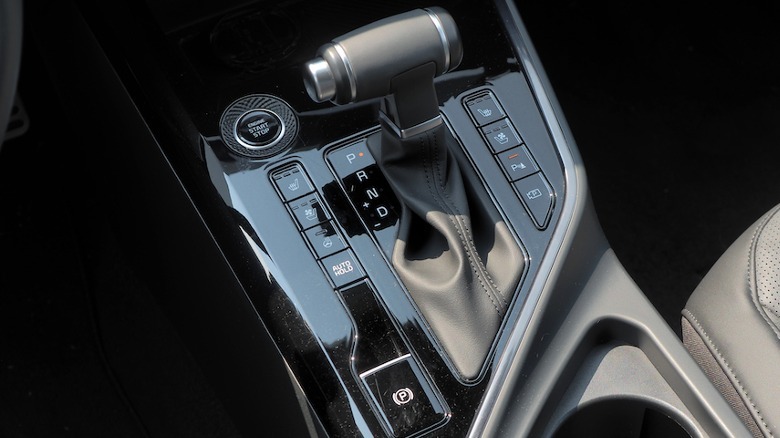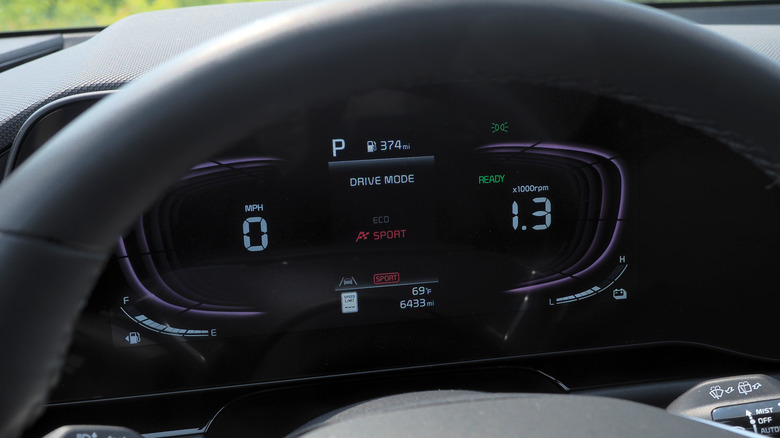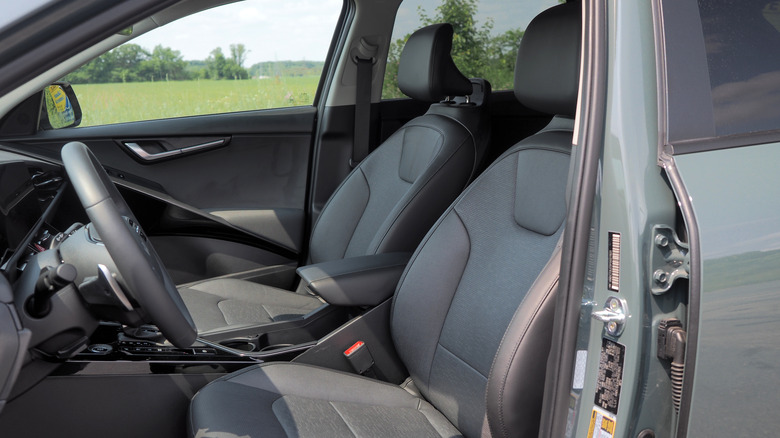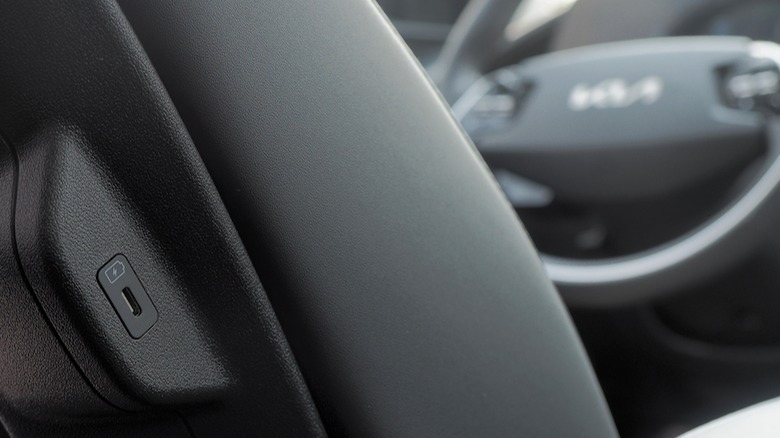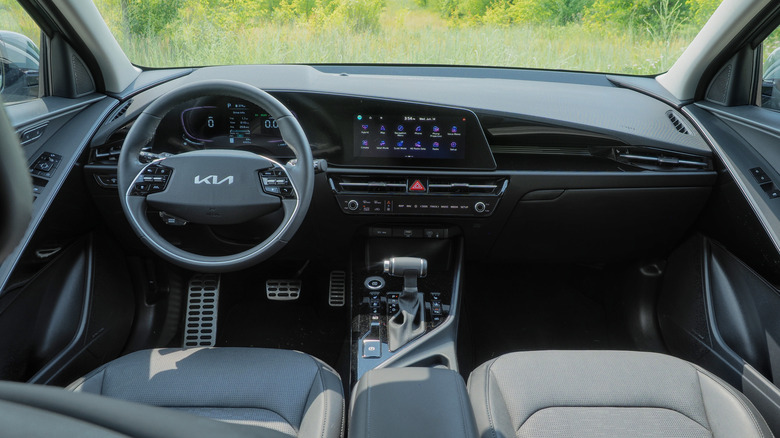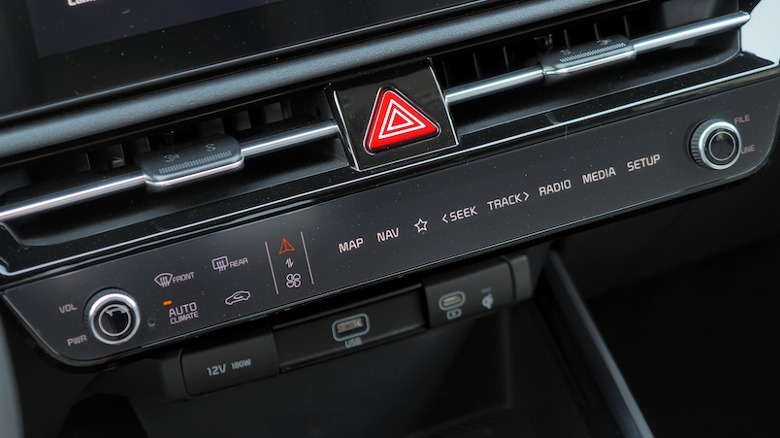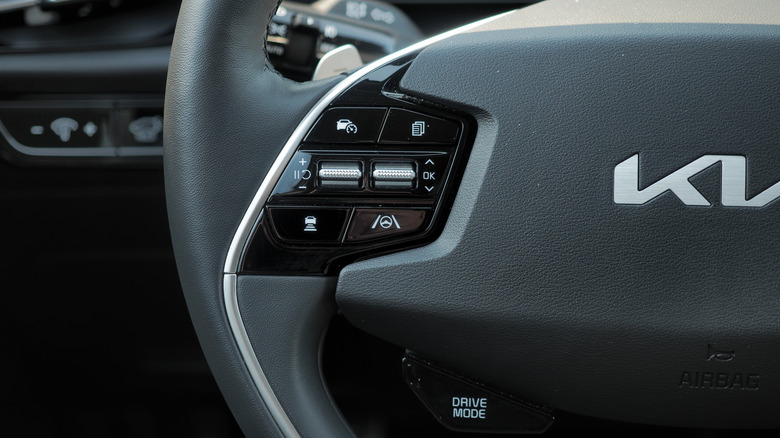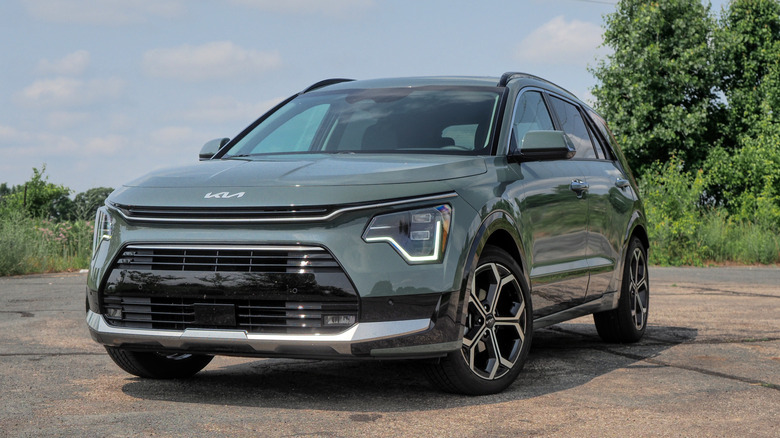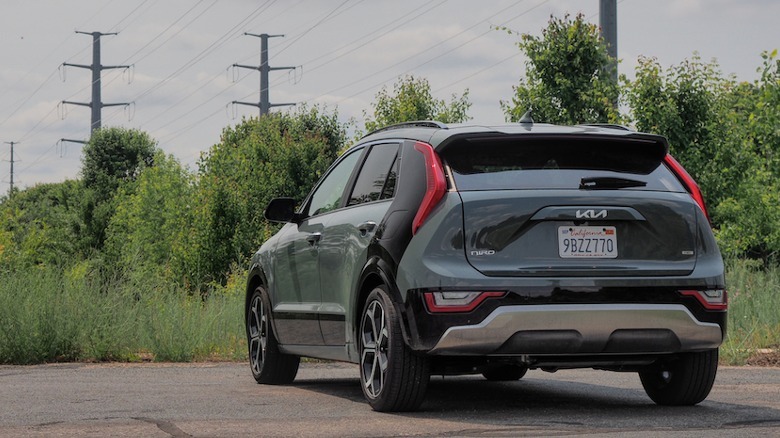2023 Kia Niro Hybrid Review: Economy Without Effort
- Mild-hybrid engine is economical
- Spacious and practical
- Well-equipped with plenty of safety tech
- No pure-EV driving mode
- Drivetrain is loud when pushed
- No AWD option
There is a good argument that every car would benefit from being electrified, and the 2023 Kia Niro HEV does nothing to undermine it. After all, while the auto industry may be headed toward a fully-electric future, right now there are plenty of people for whom going EV-only simply isn't practical. Whether that's down to charging access, cost, or range, there are plenty of reasons why the combination of gas and electric makes the most sense.
In the case of the Niro HEV, this mild hybrid builds its case around efficiency. No messing with chargers: for better or worse, you'll still be visiting the gas station. Kia's promise, though, is that you may not need to do so quite as often as in other, non-electrified cars while enjoying features more commonly found in much more expensive models.
2023 Niro HEV ownership kicks off at just $26,590 (plus a hefty $1,325 destination) for the base LX trim. The SX Touring you see here starts at $34,890 (plus destination).
It's a hatchback, not a crossover
Kia claims the Niro is a compact crossover, which seems more a case of ambition than accuracy. It's basically a mildly lifted hatchback, and that's no bad thing when it comes to flexibility and practicality. The 22.8 cu-ft of cargo space behind the rear seats — expanding to 63.7 cu-ft with them dropped down — is readily accessible over a fairly low tailgate floor, which is more than you can say about many small SUVs.
From the front, the Niro reminds me of a pursed-lip little frog. All those horizontal lines and the headlamps with their droopy daytime running lights, plus the CityScape Green paint (exclusive to the SX and SX Touring trims). Sixteen-inch alloys are standard on the LX, EX, and SX, growing to 18-inch versions on EX Touring and SX Touring.
Side-on, the first thing you spot is the contrast D-pillar at the rear of the Niro: a chunky slab reminiscent of an orca's swoop. It hides a functional air vent, aero to guide airflow around the rear of the hybrid, but also helps visually disguise what's actually a fairly chunky rear. Kia offers it in silver and black, though only with certain paint finishes: in others, it matches the rest of the body.
The easiest Niro to live with
Kia offers three powertrains under the 2023 Niro umbrella, all of which have some degree of electrification. The most mainstream is this, the Niro HEV — or "Hybrid EV" — which is a mild hybrid. It combines a 1.6-liter gas engine with an electric motor and a small battery; the latter is recharged using excess power from the inline-four engine, or via regenerative braking when the car slows.
As is the way with other mild hybrids, it's probably the easiest of Kia's trio to live with if you're coming from a gas-only vehicle. There's no way to externally recharge the Niro HEV — you can't plug it into a charger in your garage — and no decisions to make about when to use gas power and when to use electric. The car does that all itself, blending the two for 139 horsepower and 195 lb-ft of torque.
It's paired with a six-speed dual-clutch transmission and front-wheel drive as standard. Kia doesn't offer the Niro as an all-wheel drive model: if you want that, you'll need to step up to its larger, more expensive electrified cars.
More electrification, more money
The Niro PHEV keeps the 1.6-liter gas engine, but combines it with a larger, 11.1 kWh battery. As a plug-in hybrid, you can top that up via a Level 2 charger (though not a DC fast charger, like you'd find at an Electrify America public station: the plug won't fit) and get an estimated 33 miles of electric-only range.
It's also more powerful than the mild-hybrid, with 180 horsepower and 195 lb-ft of torque, but more expensive as well. Niro PHEV ownership starts at $33,840 (plus destination) for the entry EX trim; that same trim will cost you almost $5k less in Niro HEV form.
Finally, and most expensive of all, there's the 2023 Niro EV. It's entirely electric, starting at $39,550 (plus destination) before any applicable incentives. There's 201 horsepower and 188 lb-ft of torque, and up to 253 miles of EPA range. Unlike the PHEV, the Niro EV can use public DC fast chargers as well as Level 2 home chargers: figure on around 100 miles of range added after 30 minutes plugged in.
No slouch around town
Though it may have the lowest power numbers of the three different drivetrains, the Niro HEV is no slouch. Around town, it's a spritely little guy, relying on its splash of electrification to surge away from stop signs and traffic signals. Unusually, while Kia offers drive modes, there are only two of them: Eco and Sport. The former can be a little too earnest at times, and hides the Niro's pep, while the latter leans a little too far into "growling puppy-dog" to be entirely comfortable on a daily basis. The Smart drive mode that some other Kia models offer would be a nice middle-ground.
The six-speed slushes most effectively in Eco mode, too, though there's a noticeable — and noisy — thunk as it grudgingly downshifts should you bury your right foot with particular eagerness. Certainly no worse than many similarly-priced city runabouts, but it's the one time I considered overruling things and reaching for the paddle shifters instead.
Economy, almost without effort
The Niro HEV's goal, of course, is economy rather than speed. Even without the option to switch into a fully electric drive mode, the smart juggling of gas and electric means it sips fuel. Its flagship number is 53 mpg combined on the EPA's test cycle, though you'll need the smaller wheels of the two options to see it. The two Touring trims, both of which come with 18-inch wheels, see that combined figure dip to 49 mpg.
Regardless, that's still impressive, as are the 53 mpg city and 54 mpg highway ratings for the smaller-wheeled cars. The 18-inch wheels see those numbers drop to 53 mpg and 45 mpg respectively. In my own, mixed but city-leaning driving in the SX Touring, the Niro HEV averaged almost 45 mpg: down on Kia's estimates, yes, but more than acceptable since I wasn't making any particular attempt to drive frugally.
Well-equipped even in the base LX trim
Inside, the flagship SX Touring trim is well-equipped for the $34,890 (plus destination) price. Heated and ventilated front seats, a heated steering wheel, Harman-Kardon audio system, 10.25-inch infotainment touchscreen with navigation, Apple CarPlay, and Android Auto, and wireless phone charging are all onboard. So, too, is a power liftgate, SiriusXM, remote start, dual-zone climate control, and LED projector headlamps.
The more affordable trims aren't exactly spartan, however. A sunroof is standard on EX Touring and above; a power tailgate on SX and above; SiriusXM on EX and above. All trims get two USB-A and a USB-C charging port in the front, plus two USB-A ports in the rear; a wireless charging pad is standard on all but the base trim. So are dual-zone climate control and 60/40 split rear seats. Only the base LX trim makes do with Kia's smaller 8-inch infotainment touchscreen.
A familiar cabin with familiar foibles
The cabin itself feels familiar if you've been in any other recent Kia, which is both good and bad. The driver's cluster is a cunning ruse — although it looks entirely digital, it's actually just a small portrait LCD screen flanked by light-up graphics — and some of the plastics don't feel as sturdy as in the automaker's more expensive cars. The shifter in particular is fairly toy-like.
I'm also not a fan of the touch-sensitive multimedia/HVAC strip, which demands hitting a fairly small button to flip between the two sets of controls. A physical button to toggle them would at least make adjusting cabin temperature something you can do without taking your eyes off the road. Generally, though, Kia's infotainment is intuitive, and — though there's a lot of fingerprint-loving piano black plastic around them — the Niro's dedicated buttons in the center console are welcome.
Safety tech and warranty coverage galore
Safety equipment levels are lavish. Blind spot collision warnings are standard across the board, as is rear cross-traffic collision avoidance assist, lane departure warnings and lane keeping assist, lane following assist, driver attention warnings with the ever-useful leading vehicle departure alert, and safe exit warnings.
EX and above upgrades the LX's forward collision avoidance assistance with car & pedestrian detection, to include cyclist and junction turning detection. Navigation-based adaptive cruise control and Highway Driving Assist is also standard on EX and above, as are rear parking sensors; SX and SX Touring get front parking sensors, too.
Regardless of trim, Kia's warranty is more than impressive. There's a 5 year / 60,000 mile limited basic warranty, and a 10 year / 100,000 mile limited powertrain warranty. Niro buyers get 5 years / 60,000 miles of bundled roadside assistance, too.
2023 Kia Niro HEV verdict
Those already onboard with the electric revolution will probably find the Niro HEV a little passé. After all, mild-hybrids are nothing new: the Prius — itself mighty appealing in its latest generation — has been playing that song for years now. If you've got space for a charger in the garage, more power and refinement awaits you in Kia's PHEV and EV versions of the 2023 Niro.
That's not to say there's no place for this affordable HEV, and what stands out is how straightforward it is to reap the rewards of a splash of electrification. It's spacious and well-equipped, but more importantly, 2023 Niro HEV owners will save $4,000 to $4,500 on fuel costs over five years, the EPA says, compared to the average new vehicle. Considering how many people are taking a wait-and-see approach to how the full EV market shakes out, that's a frugal way to bide time.
